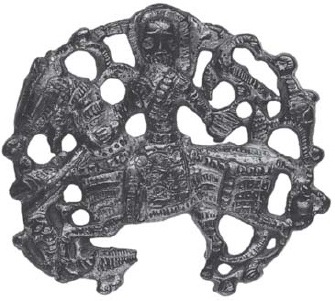
By the time the ailing al-’Adid, last caliph of the Fatimid dynasty, died during the early hours of Monday 13 September 1171, he had neither real power nor even religious authority within Egypt. Saladin could now concentrate upon strengthening Egypt as a bastion of Sunni Muslim power with himself as governor in the name of Nur al-Din of Syria. However, tension between Saladin and Nur al-Din soon emerged and had almost resulted in conflict when Nur al-Din also suddenly died in May 1174.
The main reason for this deteriorating relationship was financial. Nur al-Din saw Egypt as something of a cash cow whose resources could finance his own expanding military machine in Syria. Meanwhile Saladin wanted to build up Egyptian strength, and thus his own, as another major military power capable of taking on the Crusader states. Nevertheless, Saladin was soon governing and campaigning beyond his means. This would remain a serious problem even after his victory at Hattin in 1187. In the meantime he knew that the old Fatimid army, though increasing in efficiency, was not necessarily becoming more loyal to Saladin’s new regime. So he withheld the revenues that Nur al-Din was expecting, and used much of them to expand the expeditionary force that Shirkuh had brought to Egypt, creating an army loyal to himself alone. Saladin’s armies in Egypt and later in Syria and northern Iraq have been studied for over a century, but many misconceptions remain. Despite Saladin’s Kurdish origins, Turks dominated the new army. Kurds were also prominent but remained secondary.
After ‘liberating the Hajj Road’ by recapturing Aylah and therefore enabling Muslim pilgrims from Spain, North Africa and Egypt to travel in safety to the Islamic holy places in Arabia, Saladin did remarkably little to justify his self-proclaimed role as a leader of the jihad. In fact until 1187 the majority of his campaigns were against fellow Muslim rulers. This policy eventually established a virtually united front against the Crusader states, but in the meantime it led to considerable criticism. For example, Saladin sent armies westwards into North Africa where they clashed with the rising power of the Moroccan Muwahhidun dynasty. By dominating this area Saladin hoped to control piracy and recruited personnel for his revived Egyptian fleet, but beyond the province of Barqa (Cyrenaica) in eastern Libya Saladin’s authority was never consolidated.

A horseman with a hawk upon his wrist is illustrated on this gilded bronze harness decoration. Dating from the 12th or early 13th century it was made in Syria or what is now central Turkey. (Furusiyya Art Foundation, London)
Saladin’s campaigns southwards had similarly strategic aims, the main targets being Nubia in the Nile Valley and Yemen at the southern tip of the Arabian Peninsula. Both were hotbeds of pro-Fatimid and Isma’ili support, despite the fact that the kingdoms of Nubia were still officially Christian. As such, both were a danger to Saladin. At the time of Saladin’s takeover, the situation in the frontier zone between the northernmost Nubian kingdom and Egypt was anarchic. The threat came not only from Nubians but also from black sudani Africans, who almost certainly included ex-Fatimid soldiers and survivors of the uprising against Saladin back in 1169. As confusion spread across southern Egypt, Kanz al-Dawla, the tribal leader who was nominally in charge of the area, asked Saladin, the new master of Cairo, for help. Eventually Saladin sent his ruthless half-brother Turan Shah to expel the Nubians and sudani. Then in 1174 Kanz al-Dawla himself rose in revolt in the name of the Fatimids and joined forces with Christian Nubians. This time the outcome was more decisive, with Kanz al-Dawla being killed just as he was preparing to march against Cairo. Thereafter things remained relatively stable for over a century, during which the Nubian kingdoms witnessed a remarkable final flowering of Christian Sudanese civilization.
Yemen posed a danger as a source of pro-Fatimid plots, much of the country having been ruled by an Isma’ili Shia dynasty known as the Sulayhids from 1047 to 1138. Strategically Yemen was even more important because it controlled the eastern side of the Bab al-Mandib Straits linking Egypt with India, east Africa and the Far East. Naval warfare was a very rare occurrence in these eastern seas compared to the situation in the Mediterranean but there was a continuing danger of piracy.
Hence Saladin’s decision to dominate Yemen was to consolidate Muslim control over the entire Red Sea while protecting the maritime pilgrimage route from Egypt and the Sudan to the Islamic holy cities of Mecca and Madina in Arabia. The first expedition he sent to Yemen early in 1174 included a few ships but was primarily an overland march and was again commanded by Saladin’s ambitious brother, Turan Shah. The rarity of naval warfare, and thus of real warships, had been a feature of these eastern seas for millennia, but things changed for a while following Saladin’s conquest of Yemen. A small number of war galleys of the type known as shinis were transported from the Nile to the Red Sea and thence to the vital Yemeni port of Aden. However, these galleys then sat unused for years. Quite what these galleys were doing when the Crusader fleet sent by Reynald of Châtillon spread mayhem around the Red Sea in 1183 is unrecorded.
Nur al-Din’s death in 1174 opened up the possibility of Saladin taking over much of the Middle East as Nur al-Din’s inheritor. In fact he could not intervene immediately because a Sicilian Norman fleet was threatening the Egyptian coast, but once this danger passed and Kanz al-Dawla’s uprising in southern Egypt was crushed, Saladin proclaimed the need for unity and jihad as a justification for intervening in Syria. Generally speaking Saladin found more support amongst ordinary people and lower-ranking soldiers than he did amongst senior personnel, both civilian and military, during his campaigns to take over from Nur al-Din’s descendants and other members of the Zangid dynasty in Syria, the Jazira and northern Iraq. Yet even after winning control of Damascus in October 1174 Saladin remained merely ‘governor’ of Egypt and southern Syria. Not until the following year was he recognized as sultan or senior ruler of the region.
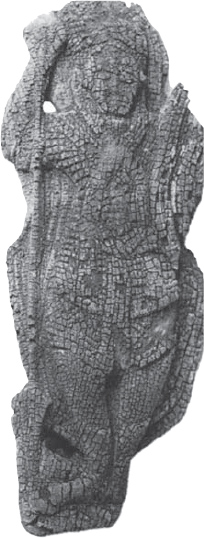
A carved, but also charred, 12th-century wooden plaque showing a warrior-saint equipped in the Middle Eastern rather than Byzantine style, from the northern Nubian capital of Old Dongola. (Sudan National Museum, inv. no. D.1/98, Khartoum; Wojciech Chmiel photograph)
Aleppo was more difficult to take and Saladin had to fight real campaigns before northern Syria fell under his control. Here and in northern Iraq the Zangid rulers regarded him as a Kurdish upstart who had turned against the family of his employer. So Saladin used his self-proclaimed position as leader of the jihad against the Crusader states to undermine support for these Zangid rivals. In military terms his operations against these fellow Muslims were mostly on a small scale. Politically he was more brutal, and succeeded in winning over various smaller dynasties that already resented Zangid pretentions.
There were more sieges than field battles during Saladin’s conquest of these Islamic provinces, some of which were very ruthless. That of Manbij is worthy of note and began on 11 May 1176. The place was actually held by Qutb al-Din Yinal ibn Hassan al-Manbiji, whom the chronicler Ibn al-Athir described as a fierce enemy of Saladin. Eventually Saladin became so exasperated that he seized the town of Manbij, ‘but the citadel remained, held by its lord (Qutb al-Din Yinal) who had gathered there men, weapons and stores. Saladin besieged him and pressed him hard, carrying out assaults on the citadel. The sappers reached the wall, mined it and the place was taken by storm. Saladin’s troops took everything within as booty. Saladin took its lord Yinal prisoner and took all his wealth, leaving him poor, not possessing a bean.’2
Criticism of Saladin, claiming he spent more effort attacking fellow Muslims than he did on jihad against the Crusader states, was only partially justified. As early as 1177 Saladin led a large-scale raid into the Kingdom of Jerusalem, probably to forestall a feared Crusader–Byzantine assault on Egypt following the arrival of a crusade led by Philip of Flanders. In fact Saladin’s counter-strike was almost a disaster, culminating in defeat at Tall al-Safiya (Mont Gisard) on 25 November. Reynald of Châtillon, the new lord of Oultrejordain in what is now southern Jordan, was largely responsible for Saladin’s discomfiture and the battle of Tall al-Safiya was just one in a series of increasingly personal clashes between himself and Saladin.
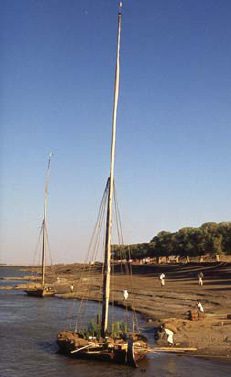
A number of raids into southern Egypt by the Christian Kingdom of Nubia led to counter-attacks by Saladin’s forces, which reached as far as the ancient Nubian capital of Dongola. (Author’s photograph)
Many in Saladin’s army were taken prisoner at Tall al-Safiya but only the most senior are known to have been ransomed. Very little is known about the fate of lower-ranking captives, so a letter sent by one such man to friends or family in Egypt is particularly interesting. It survived amongst other documents in the geniza or ‘hiding place’ in the Ben Ezra synagogue in Cairo. Since the writer was captured by the Kingdom of Jerusalem between 1174 and 1187, the battle of Tall al-Safiya was the most likely occasion. His name is unknown but he clearly feared being forgotten about for not being an important person.3
Two years later Saladin achieved a significant victory – he not only defeated a Frankish force at Marj al-’Ayun but then took over a new Crusader castle overlooking the strategic Jacob’s Ford crossing point over the upper river Jordan. Nevertheless this campaign was very expensive at a time when Saladin’s government was already short of money. So the two-year truce that was subsequently agreed probably came as a relief to both sides, especially as the effects of a severe drought and the resulting famine added to the destruction of crops during the campaign itself. This drought lasted five years and was particularly severe in Damascus, where the city and the surrounding Ghuta oasis were entirely dependent upon a sophisticated system of canals that took drinking, drainage and irrigation water from the small river Barada.
Egypt had the mighty Nile, which rises deep in Africa and consequently escaped this particular climatic crisis. Indeed, the importance of caravan convoys of food supplies from Egypt to Syria during these years is hard to overstate. Since Saladin had freed the Hajj Road by retaking Aylah, such caravans did not have to pass through Crusader territory. Nevertheless they remained vulnerable to Reynald of Châtillon’s fief of Oultrejordain and its castle garrisons, which could still threaten communications between Egypt and Syria. Further north a spur of Crusader territory along the lower part of the river Yarmouk, centred upon the remarkable cave-fortress of Habis Jaldak, posed similar dangers.
Saladin, newly appointed as chief wazir to the young Fatimid Caliph al-’Adid, invited his elder brother Shams al-Dawla Turan Shah to join him in Cairo. However, Turan Shah not only brought his family and retinue but also a substantial army provided by Saladin’s sovereign, Nur al-Din of Syria. Although the 19-year-old Caliph al-’Adid, a sickly youth who would die only two years later, welcomed Turan Shah as a friend, many in the Fatimid court saw these newcomers as strengthening Saladin’s position while weakening their own. One of the most worried was the caliph’s close advisor, the Nubian eunuch al-Mu’tamin al-Khilafah, who was a close ally of the Fatimid ‘abid guard regiments recruited from Sudanese slaves.
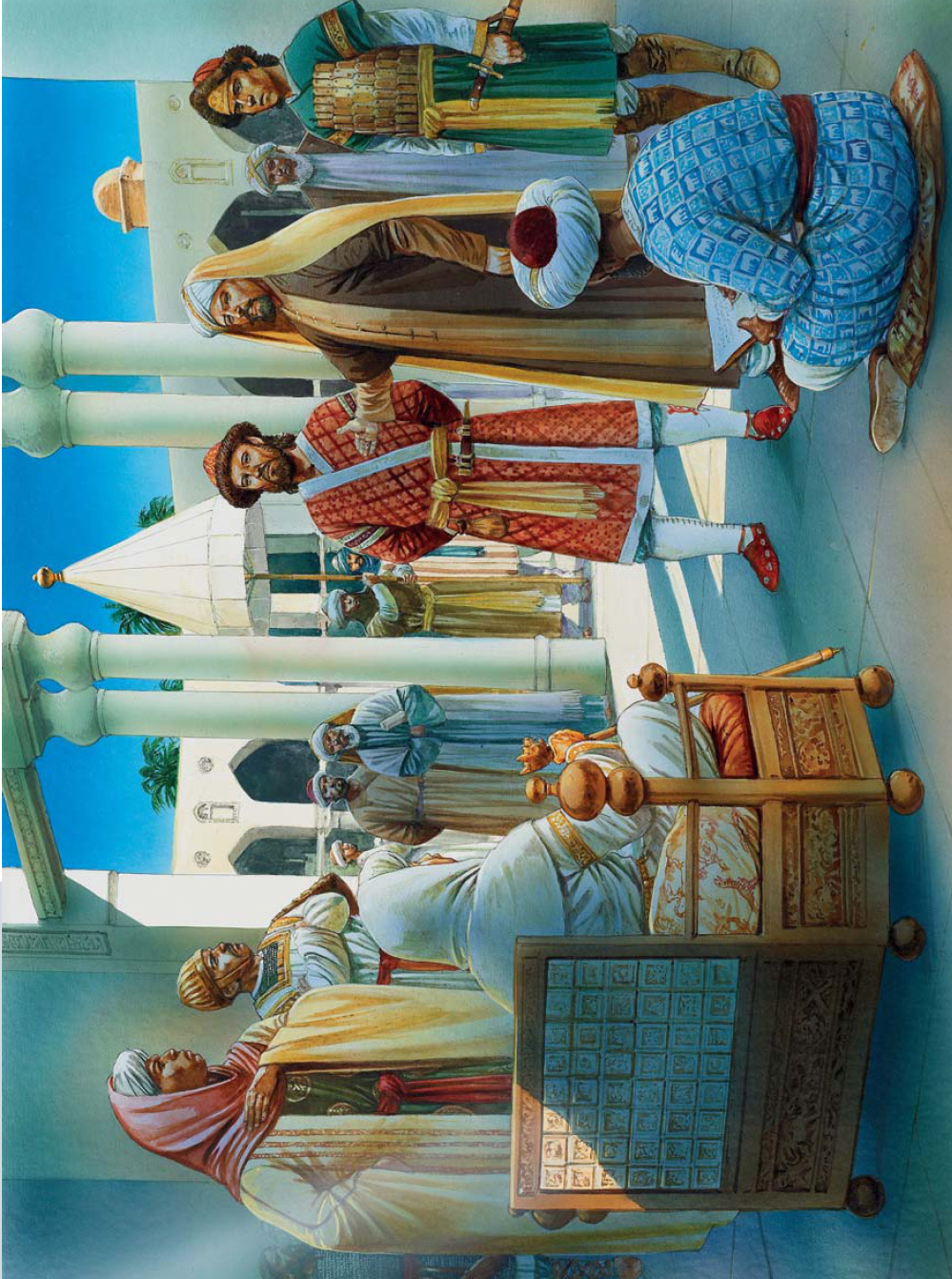
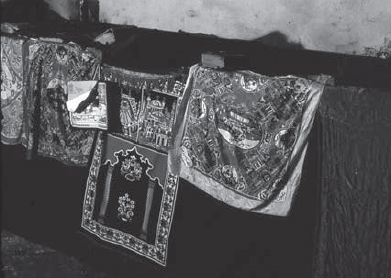
Rashid al-Din Sinan ruled an Isma’ili mini-state that effectively defied all comers. His tomb outside Masyaf is still a place of importance to Isma’ilis. (Author’s photograph)
As Lord of Oultrejordain, Reynald cultivated good relations with several Bedouin Arab tribes. Chroniclers generally described the latter as predatory, mercenary and as traitors to Islam. In reality many of them had deep grievances and fundamental religious disagreements with Saladin and with many of the other largely Turkish ruling elites of the Islamic Middle East. Reynald’s first raid was a sudden assault upon a large caravan at the oasis of Tayma, 400km south of Karak, during the winter of 1181–82 when grass was available for the raiders’ horses. Like all Reynald campaigns, it had a sound strategic objective, diverting Saladin’s attention away from Aleppo in northern Syria and thus delaying his unification of the lands surrounding the Crusader states.
His next operation was the even more daring Red Sea raid of the winter of 1182–83, though he did not himself take part. Reynald’s ships were built by Syrian Christians, probably on the Mediterranean coast rather than mountainous Oultrejordain. They were then taken as prefabricated pieces to be launched in the Gulf of Aqaba. The Crusader warlord was, in fact, copying what Saladin had done when he retook Crusader-held Aqaba a decade earlier. The resulting naval operation not only had a huge psychological impact by attacking the Muslims’ Red Sea pilgrimage routes and threatening Islam’s holiest sites, but it also interrupted trade between Egypt and India.
In 1183 Saladin decided he was strong enough to launch a major raid into the Kingdom of Jerusalem, but it again failed. Saladin’s efforts farther north, in the fertile hills now known as the Jabal Ajlun, were more successful and in 580 AH (1184–85) Saladin ordered an amir named ‘Izz al-Din to move from his current post as governor of the frontier hills behind Beirut to take over Ajlun. Both areas held important iron mines, so perhaps ‘Izz al-Din was a specialist in these matters.
Saladin was at least as skilled a diplomat as he was a military commander and his broad strategic vision led him to cultivate good relations with the Byzantine Empire. Both states wanted to contain the Saljuq Sultanate of Rum in what is now central Turkey, though Saladin had to proceed with caution because the Saljuqs could serve as useful allies against the Crusader Principality of Antioch. His task was made easier by a shattering defeat suffered by the Byzantines at the hands of the Saljuqs at Myriokephalon in 1176. The death of the pro-Crusader Emperor Manuel in 1180 was then followed by increasing tension between the Orthodox Greek Byzantines and their Latin Catholic neighbours. A golden opportunity came when two senior members of the Byzantine aristocracy, Isaac and Alexius Angelus, fled to Syria as refugees from Emperor Andronicus (r. 1183–85). Saladin cultivated their friendship until Isaac returned home in 1185 to become the new Byzantine Emperor. It was a bonus when, hearing rumours of an alliance between Isaac and Saladin, the Crusader Count of Tripoli took Alexius Angelus prisoner as he was on his way home to Constantinople some months later.
2 Ibn al-Athir (tr. Richards, D. S.), The Chronicle of Ibn al-Athir for the Crusading Period, part 2: The Years 541–589/1146–1193 (Aldershot, 2007) pp. 242–43.
3 Cahen, C., ‘Une lettre d’un prisonnier musulman des Francs de Syrie’, in (ed. anon.), Études de civilization médiévale (IXe-XIe siècle): Mélanges offerts à Edmond-René Labande (Poitiers, 1975) pp. 83–87.